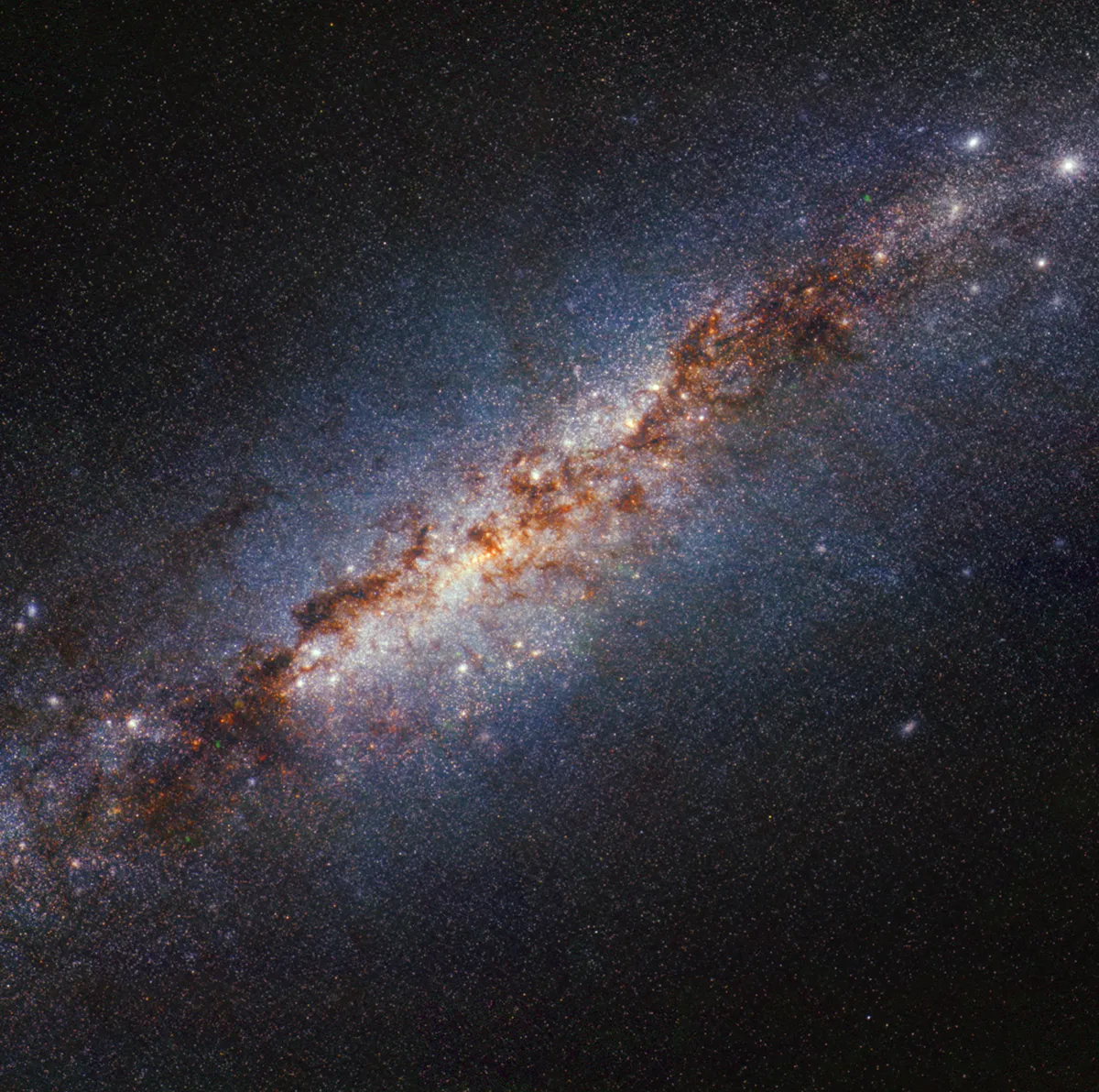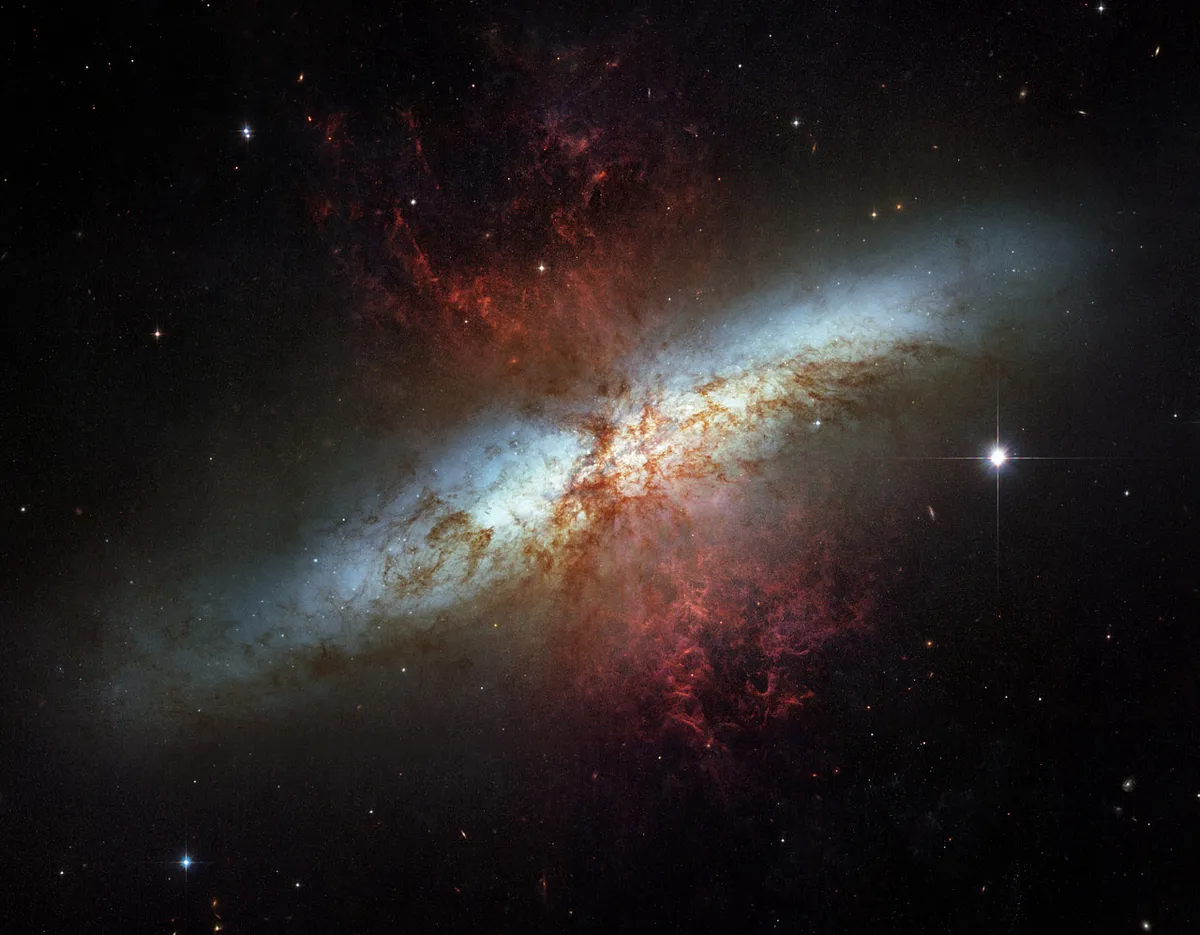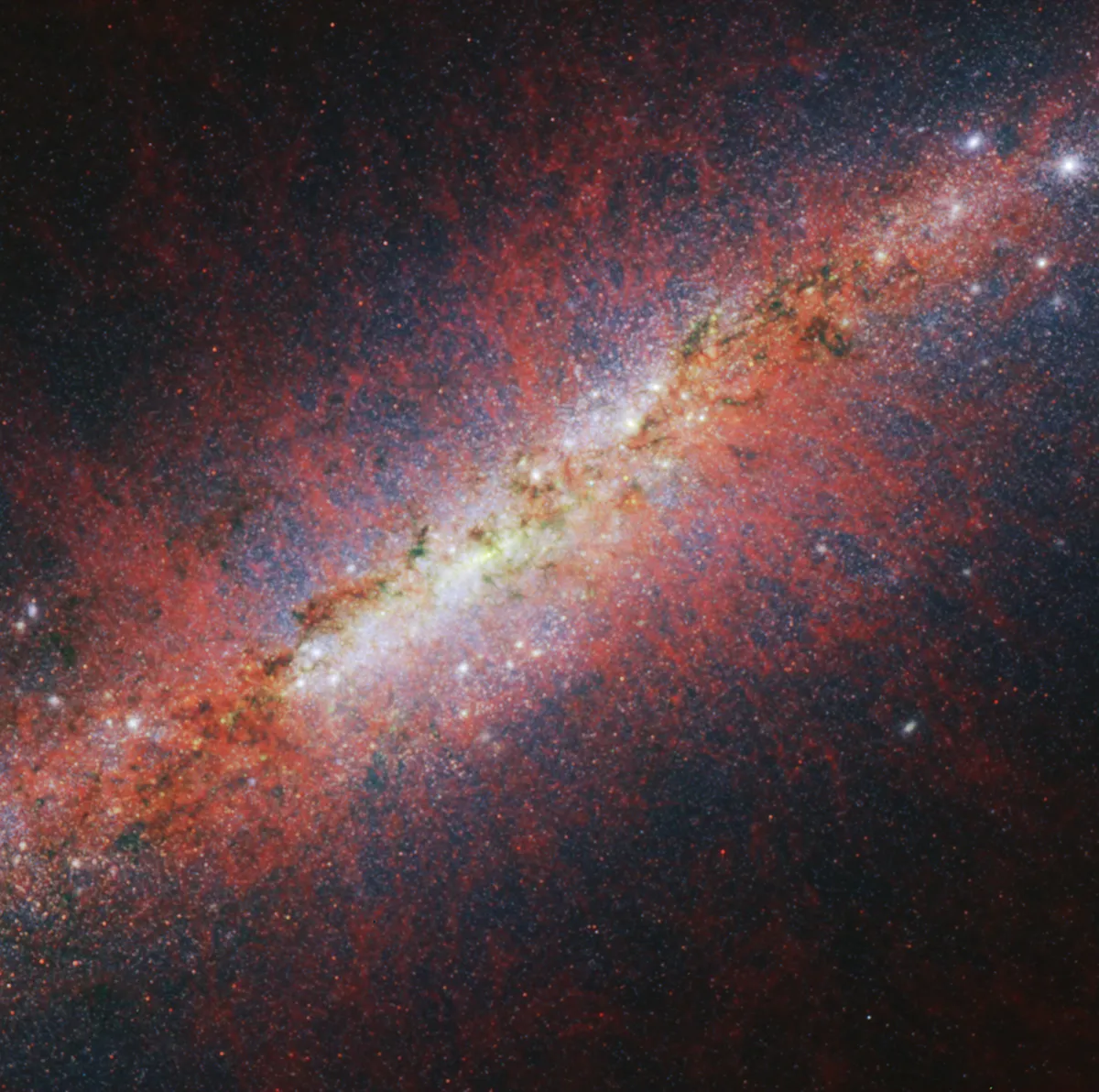The James Webb Space Telescope has captured an amazing image of galaxy M82, which is undergoing fierce bursts of star formation, blasting the surrounding region with powerful streams of stellar wind.
Webb's infrared vision is giving astronomers a greater view of M82 than ever before, enabling them to peer through obstructive cosmic dust and get to the heart of the galaxy.
Galaxy Messier 82, also known as the Cigar Galaxy, is 12 million lightyears from Earth and can be seen in the constellation Ursa Major, host of the famous Plough star pattern.
This galaxy is birthing new stars 10 times faster than our own Milky Way galaxy, and is what's known as a 'starbust' galaxy.

A team of astronomers used Webb’s NIRCam (Near-Infrared Camera) instrument to get a closer look at the galaxy's centre and learn more about the process of star formation.
"M82 has garnered a variety of observations over the years because it can be considered as the prototypical starburst galaxy," says Alberto Bolatto, lead author of the study.
"Both Spitzer and Hubble space telescopes have observed this target. With Webb’s size and resolution, we can look at this star-forming galaxy and see all of this beautiful new detail."

Webb, M82 and the secrets of star formation
Webb's infrared vision can see through cosmic dust and give astronomers a better look at star formation at the heart of galaxy M82.
The image shows dark brown tendrils of dust streaming through the galaxy's white core, while small specks of green show concentrated areas of iron, most of which are supernova remnants: all that remains of exploded stars.
Small patches in red are regions where molecular hydrogen is being lit up by the powerful radiation emanating from nearby young stars.
"This image shows the power of Webb," says Rebecca Levy, second author of the study, at the University of Arizona in Tucson.
"Every single white dot in this image is either a star or a star cluster. We can start to distinguish all of these tiny point sources, which enables us to acquire an accurate count of all the star clusters in this galaxy."
Observing galactic winds

A Webb image of M82 in slightly longer wavelengths (above) shows clumpy tendrils in red extending above and below the plane of the galaxy.
These are galactic winds caused by star formation and the supernova explosions of older stars.
The astronomers behind the study want to better understand how these galactic winds affect the surrounding environment.
By resolving a central section of galaxy M82, they've been able to examine where the wind originates and how hot and cold components interact with it.
Webb’s NIRCam instrument has traced the structure of the galactic wind via emission from sooty chemical molecules known as polycyclic aromatic hydrocarbons (PAHs).
These are very small dust grains that survive in cooler temperatures but are destroyed in hot conditions.
Webb’s view of the PAH emission reveals the fine structure of the galactic wind, depicted as red streaming away from the central region of star formation.
The team intend to follow up this study with spectroscopic observations of galaxy M82 using Webb, which they hope will help determine the ages of star clusters and how long star formation lasts in a starburst galaxy.
You can read the authors' paper at arxiv.org/abs/2401.16648
